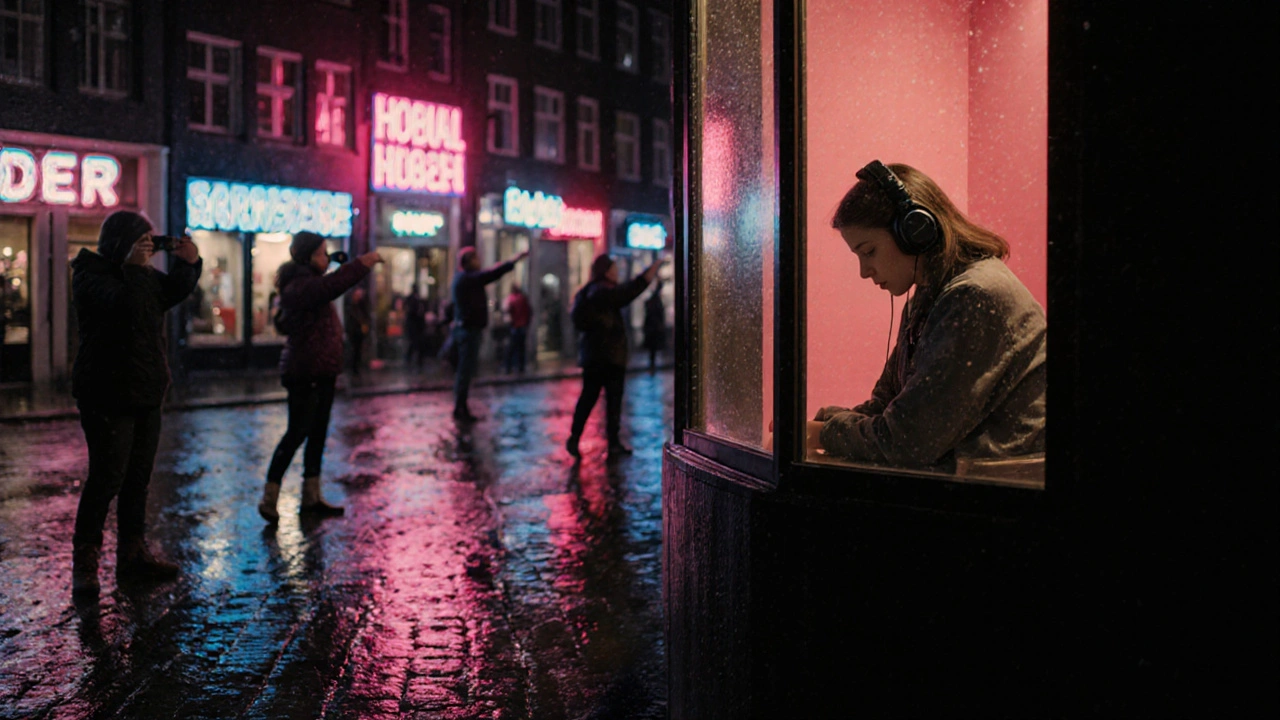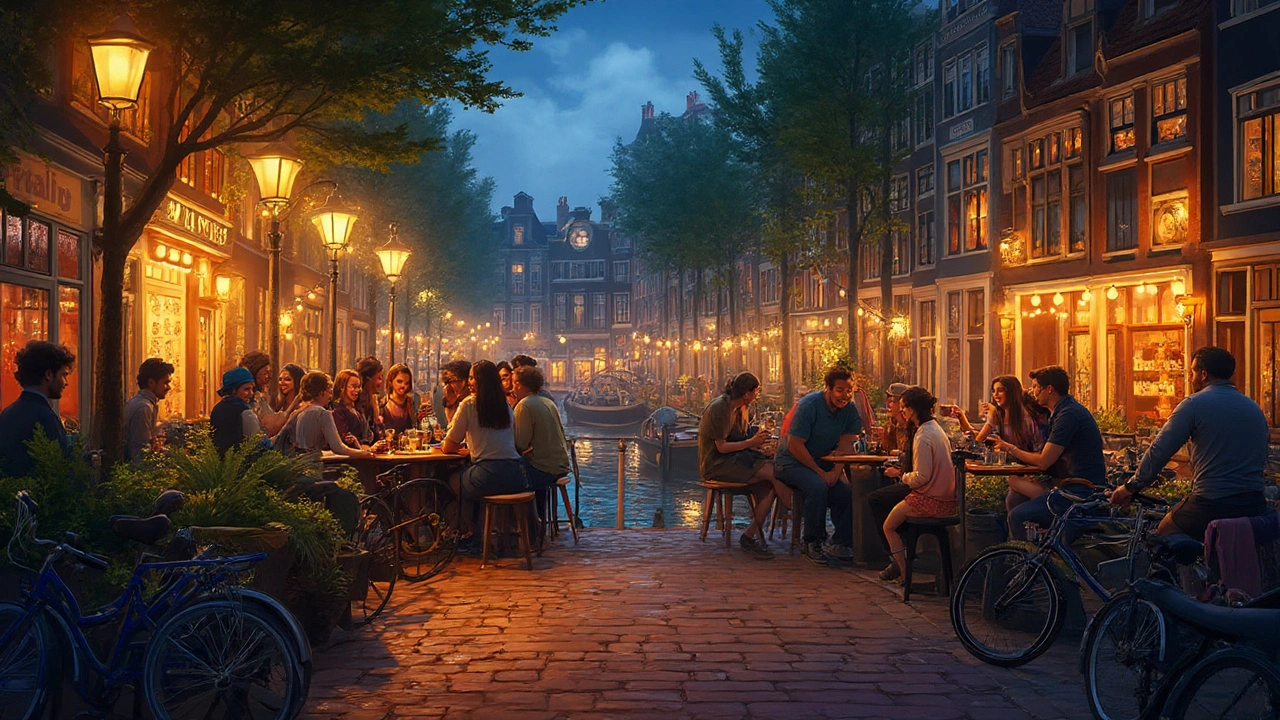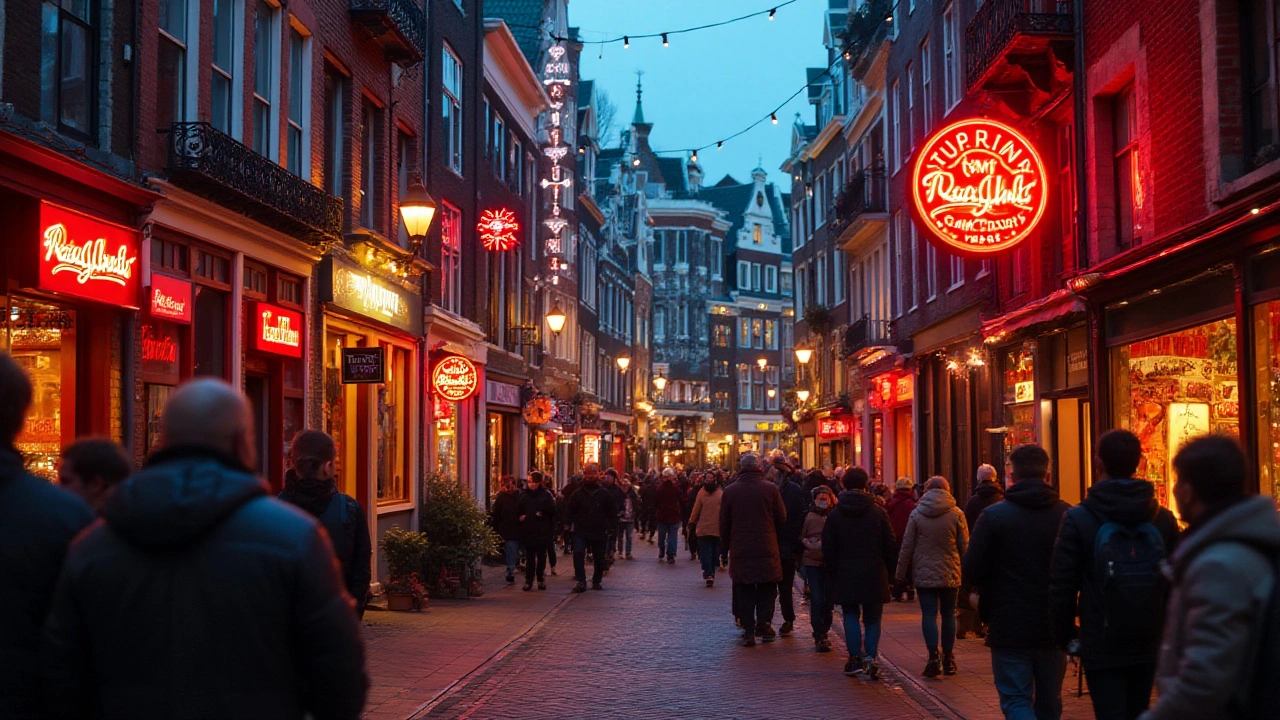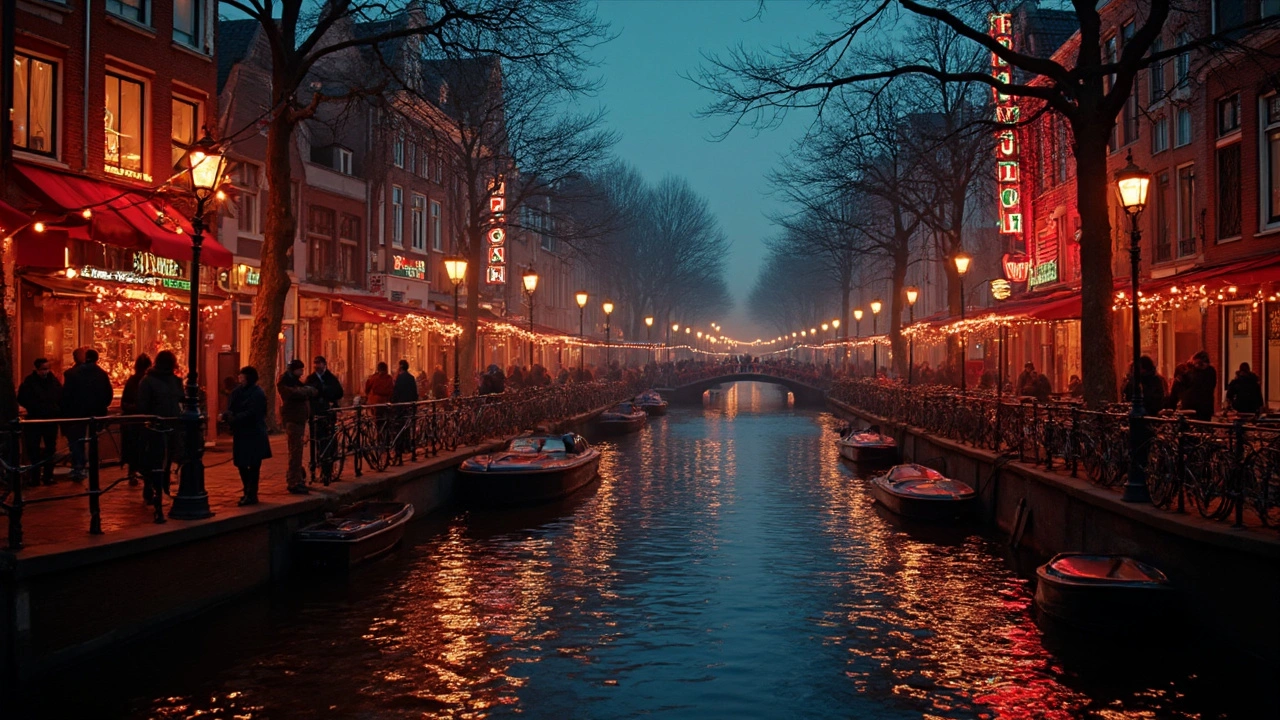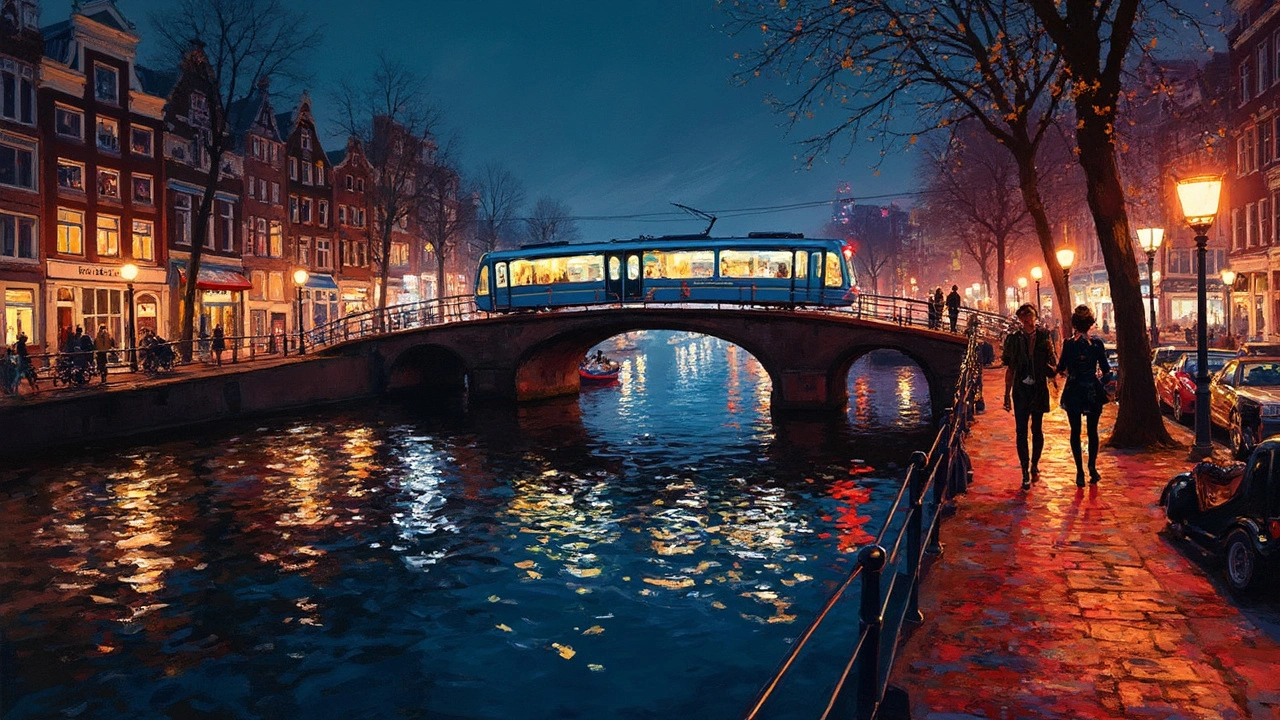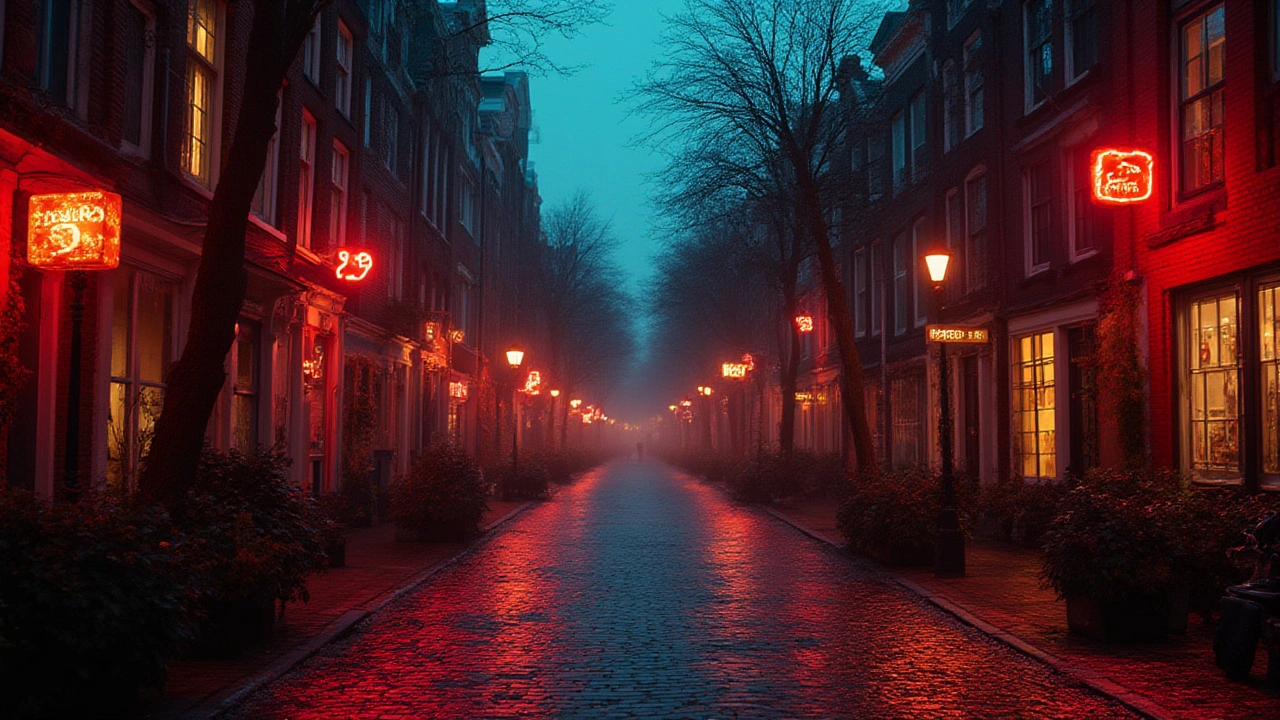
Amid neon-lit windows and wandering tourists, most eyes are glued to the spectacle—the Red Light District’s endless display of Amsterdam’s call girls. But who stops to think about what all this buzz means for the environment? Every evening, while the canals reflect streaks of colored light, energy meters spin and waste bins spill over. Behind velvet curtains and beneath the heartbeat of nightlife lies a less glamorous truth: the ecological imprint of an industry running every day, around the clock.
The Hidden Energy Costs of Amsterdam’s Red Light Nightlife
Have you ever noticed just how bright the Red Light District stays, even past midnight? Those glowing red lights aren’t powered by romance—they run on electricity, 24/7. Multiply that by the hundreds of windows in De Wallen and you’re talking about thousands of kilowatt-hours every year, most of it just to keep those infamous windows lit. The city’s 2023 energy report estimated that these windows—used mainly by call girls—together consume as much electricity annually as nearly 350 average Dutch homes. That’s a lot, especially for a city that prides itself on being green.
But the daily carbon load doesn’t stop at lighting. Air conditioning, heating, and countless appliances keep each brothel comfortable, regardless of the weather. The Dutch are famous for keeping their homes cold, but these rooms? Always toasty, year-round. Call girls depend on a comfortable atmosphere for their work, and the climate controls chew through natural gas and electricity. Some landlords have started swapping out old bulbs for LEDs and investing in insulation, but the majority of the district’s centuries-old buildings leak both heat and energy. And that means the environmental footprint from just keeping these places open (let alone bustling) is massive.
Transport is another hidden factor. Amsterdam may be famous for its bikes, but surveys from the Amsterdam city council in 2024 showed only about 10% of clients arrive by bicycle. The rest rely on taxis, Ubers, or personal cars, causing a steady creep of CO2 emissions—especially after dark when public transport tapers off. Many call girls themselves commute daily, and only a sliver opt for the GVB night buses. Taxis idling near the Red Light zone? They’re a constant. It might feel invisible but all those short car rides leave their own smoggy trail across the city’s carbon reporting ledger.
Even water use is more significant than people assume. Each window brothel requires showers, laundry, and regular cleaning, all using fresh tap water in a city already carefully balancing its delta aquifers. Amsterdam Waternet data from last year put the Red Light District’s water consumption at about 12% higher per square meter than comparable hospitality sectors like bars or budget hostels.
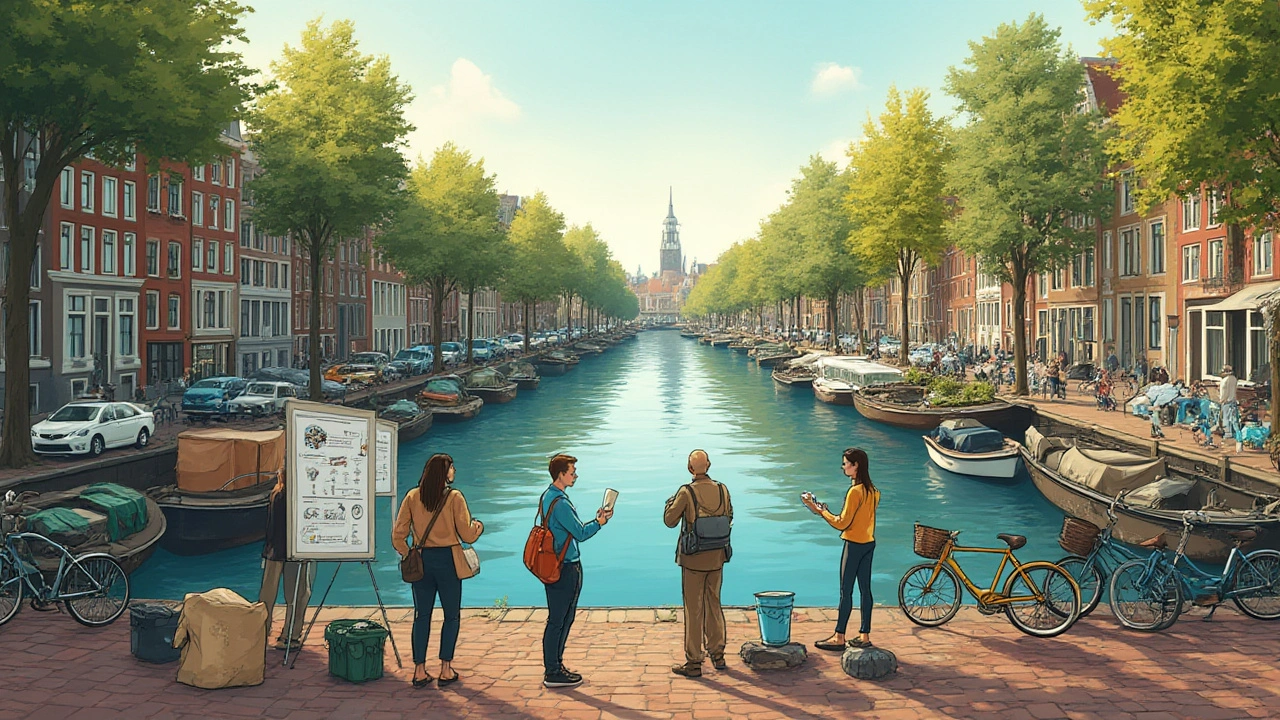
Waste, Consumption, and the Daily Grind: Byproducts of a Busy Business
Let’s step inside those rooms—not as clients, but as environmental detectives. Single-use items are everywhere: condoms, wipes, disposable towels, and bottles. Amsterdam’s health regulations insist on strict hygiene, leading to mountains of waste nightly. While necessary for safety, this barrage of trash strains local waste systems. In 2023, local sanitation crews reported that Red Light venues produced nearly double the refuse of neighboring areas, about 2.4 million kilograms annually. That’s more garbage than the entire Amsterdam Zoo produces in a year.
Sorting this waste is a headache. Condoms and wipes clog up sorting centers because they can’t be recycled. The city hands out special "Red Bags" for medical waste—these turn up by the thousands every month. Keyboards tap all day at the city council on how to fix it, and a few venues have piloted compostable alternatives to standard single-use products. So far, it’s hardly made a dent. Previous experiments with on-site incinerators hit a wall with air quality fines. The challenge is colossal: how do you keep things safe and clean without a nonstop stream of landfill-bound packaging?
Consumable products extend the footprint. Bottled water, snack wrappers, takeout food for workers—night after night, they pile up. Some brothels offer vending machines stocked with soft drinks and snacks, and each can or wrapper becomes extra litter. Sustainable food deliveries have caught on lately (one clever venue offers a discount to clients who bring reusable bottles), but most consumption habits stick to single-use out of habit and convenience. Every item shipped in and every bin filled up ripples out into a bigger footprint for the district.
Laundry is a sleeper villain, too. Fresh sheets and towels go through high-temperature cycles daily to meet hygiene standards. Laundromats specializing in those famous red-room supplies (their delivery vans can be spotted zipping around the city) use heavy-duty detergents and tons of water. Amsterdam’s water board found that Red Light laundry businesses used about 15% more energy per kilo washed than standard hotels, mainly due to the extra sanitation required by law.
There are eyes on the nitty-gritty, too. Friends at Greenpeace told me about new pilot projects in 2024, testing ‘closed-loop’ laundry systems using biodegradable soaps and heat recovery. Two local brothels saw their laundry-related carbon output drop by 40%—not perfect, but a real start. Still, widespread adoption costs money, and many venues are small and family-run with little financial wriggle room for green upgrades.
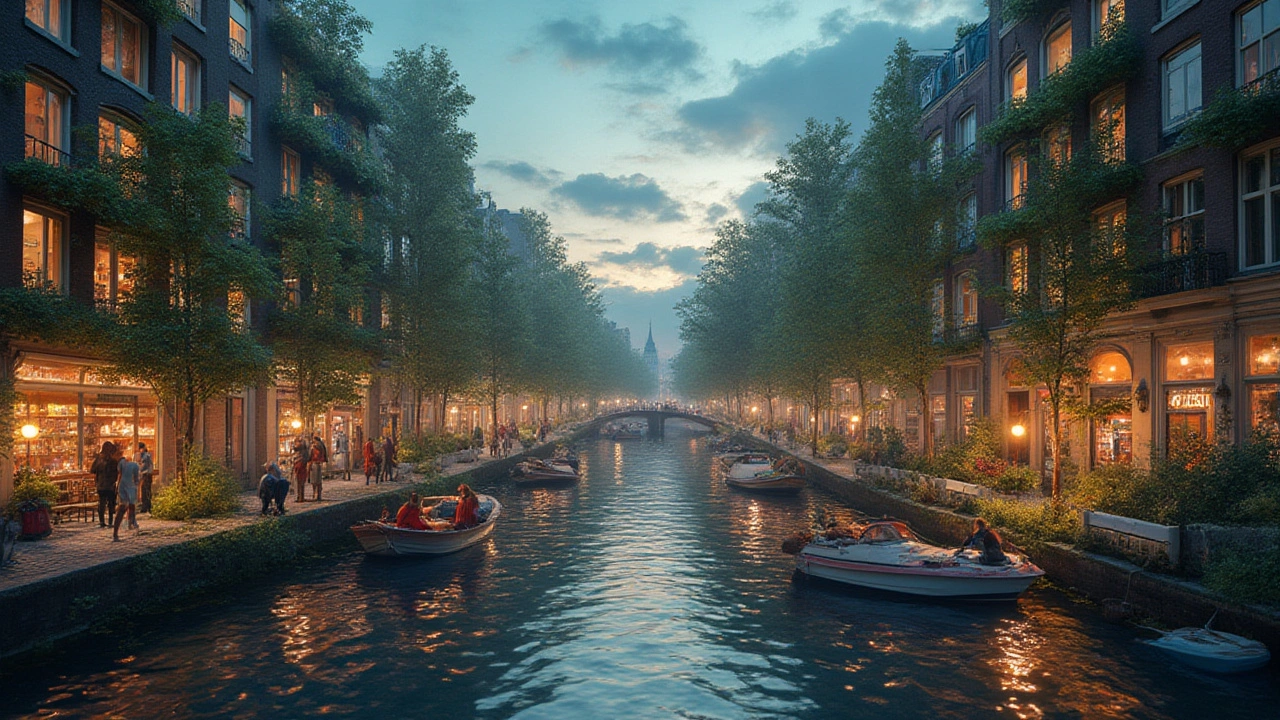
Toward Greener Streets: Sustainable Solutions for Amsterdam’s Night Scene
No one wants the Red Light District to become a ghost town—least of all Amsterdam. The city’s identity is closely linked to this storied area. But the cracks in the environmental foundation are hard to ignore. So, what’s actually being tried, and what could help reduce that environmental footprint for call girls and everyone else involved?
First, tech is making inroads here. In 2025, Amsterdam started rolling out an incentive program for brothel owners who upgraded insulation or installed energy-efficient appliances. Windows that automatically dim at off-peak times, motion-sensor heaters, and solar panels are beginning to appear on rooflines. As of this spring, over 40 businesses joined, and the city reports an average 20% drop in electricity use among participating venues. It turns out, even old canal houses can be retrofitted if the cash is there.
Water-saving gadgets are catching on, too, like low-flow shower heads and toilets. Some brothels now track water use in real-time, shaming their competitors into lower numbers. If you think gamifying green habits is silly—think again. The district’s Instagram feeds feature weekly ‘eco wars’ between venues with trophies for the lowest usage.
Transport is trickier. Some businesses now hand out free transport tokens for public night buses, steering staff and regulars away from taxis. It’s a small detail that chips away at nightly traffic and emissions. Bike parking has doubled in size at the north side of the district, and a few venues partnered with local bike rental shops, offering discounts to eco-conscious clients (and yes, some call girls now cycle to work decked out in high-vis gear and sneakers).
Waste management is making slow but steady progress. The city council partnered with a Dutch start-up to test biodegradable single-use items across 10 windows last autumn. Early results were mixed—eco-condoms have a way to go before they’re mainstream—but compostable wipes and recycled paper towels now see wider use. Education is part of the solution, too. This spring, workshops for sex workers covered easy waste-sorting tricks and tips to politely encourage clients to do their bit.
For the future, the city considers strict energy quotas in the busiest zones and plans to fund a central laundry facility using recycled greywater for the whole area. Sidewalks may soon be lined with pocket gardens, managed by venues in exchange for modest tax breaks. Imagine Red Light windows with rooftop gardens, bees buzzing just above the city’s most notorious playground. Why not?
So next time you wander the Red Light District, maybe you’ll spot those subtle hints: solar panels hiding on centuries-old gables, bins neatly divided for recycling, and, just maybe, a poster telling you which brothel is leading this month’s green race. The call girls are still there, but for Amsterdam, keeping it sexy and sustainable might just become its next bold experiment.

